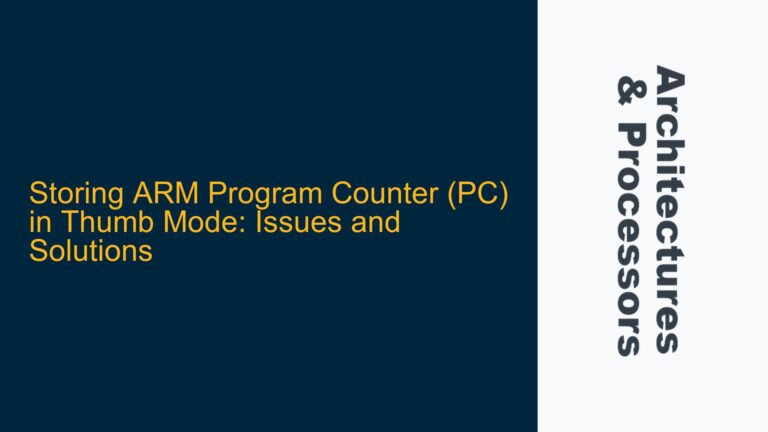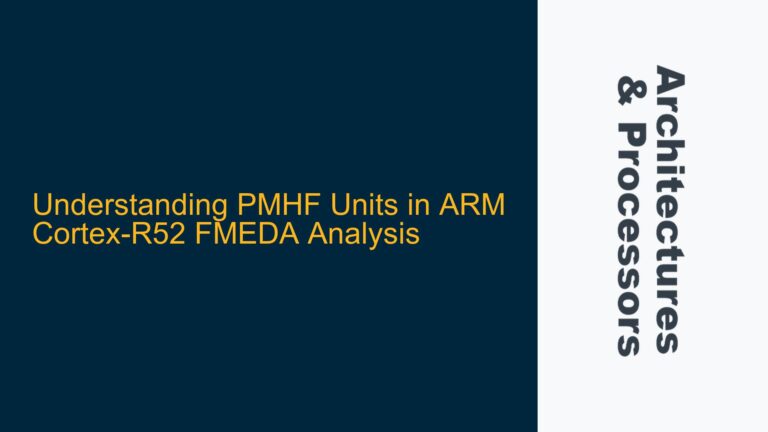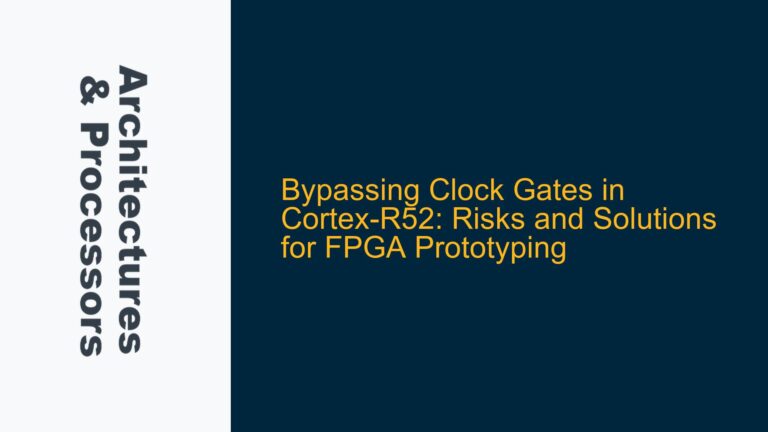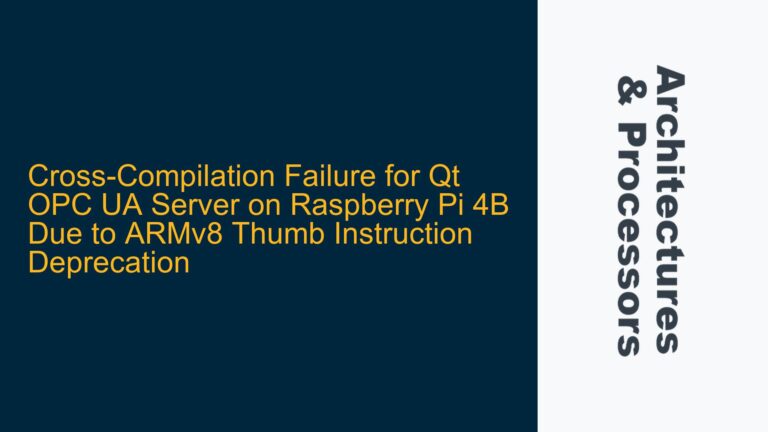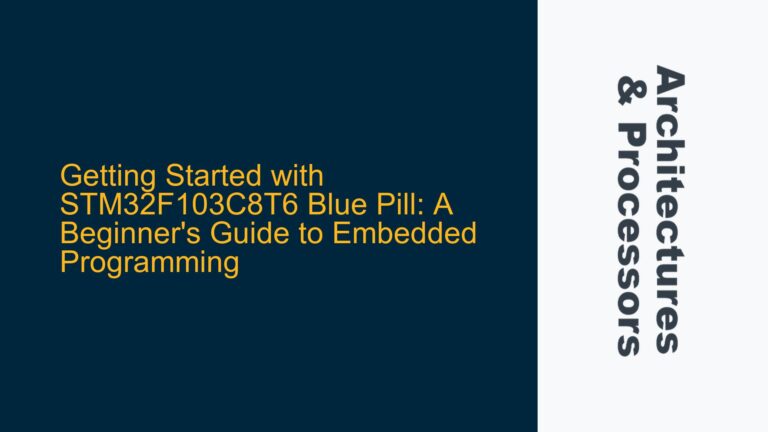ARM Cortex-M0+ Register Constraints and Stack Frame Challenges
The ARM Cortex-M0+ processor, while highly efficient for low-power embedded applications, presents unique challenges when converting complex C code into optimized assembly. The core issue revolves around the limited availability of high registers (R8-R12) for most instructions, with only ADD, CMP, and MOV operations permitted. This restriction forces developers to rely heavily on low registers (R0-R7) and the stack pointer (SP) for managing variables and pointers. However, accessing variables via the stack incurs a performance penalty, as stack-based operations typically take two cycles compared to one cycle for register-based operations.
In the context of the provided code snippet, the function FDCT32 performs a 32-point Fast Discrete Cosine Transform (DCT) on a buffer of integers. The algorithm involves multiple pointer manipulations, arithmetic operations, and a custom MULSHIFT32 function that multiplies two 32-bit integers and returns the top 32 bits of the result. The function requires two primary pointers: buf (the input/output buffer) and cptr (a pointer to a coefficient array). Additionally, the algorithm uses several intermediate variables (a0, a1, a2, a3, b0, b1, b2, b3) and shift values (s0, s1, s2).
The primary challenge lies in managing these variables and pointers within the limited register set of the Cortex-M0+. The MULSHIFT32 function consumes registers R0-R4, leaving only R5, R6, and R7 available for other operations. This constraint forces the use of the stack for storing intermediate values, which introduces additional latency. Furthermore, the need to manipulate multiple pointers (buf, cptr) exacerbates the register pressure, as pointer arithmetic requires dedicated registers.
Register Pressure and Pointer Arithmetic Limitations
The Cortex-M0+ architecture imposes significant constraints on register usage, particularly when dealing with pointer arithmetic and multi-register operations. The limited availability of high registers (R8-R12) for most instructions forces developers to rely on low registers (R0-R7) for the majority of operations. This becomes problematic in algorithms like FDCT32, where multiple pointers and intermediate variables must be managed simultaneously.
The MULSHIFT32 function, which performs a 32-bit multiplication and extracts the top 32 bits of the result, consumes registers R0-R4. This leaves only R5, R6, and R7 available for other operations. In the context of FDCT32, these registers must be used to manage the pointers buf and cptr, as well as intermediate variables like a0, a1, a2, a3, b0, b1, b2, and b3. This creates a significant register pressure, as the available registers are insufficient to hold all necessary variables simultaneously.
To mitigate this issue, developers often resort to using the stack for storing intermediate values. However, stack-based operations incur a performance penalty, as accessing variables on the stack typically takes two cycles compared to one cycle for register-based operations. This penalty is particularly pronounced in algorithms like FDCT32, where multiple stack accesses are required within tight loops.
Another challenge arises from the need to perform pointer arithmetic on buf and cptr. The Cortex-M0+ architecture does not support complex addressing modes, requiring developers to manually calculate pointer offsets using available registers. This further exacerbates the register pressure, as additional registers are needed to hold intermediate results during pointer arithmetic.
Implementing Efficient Register Management and Stack Optimization
To address the challenges of register pressure and stack-based performance penalties in the Cortex-M0+ architecture, developers can employ several optimization techniques. These techniques focus on maximizing register utilization, minimizing stack accesses, and leveraging the limited instruction set to achieve efficient code execution.
Maximizing Register Utilization
One approach to maximizing register utilization is to carefully analyze the data flow within the algorithm and identify opportunities for register reuse. In the case of FDCT32, intermediate variables like a0, a1, a2, and a3 are used only within specific sections of the algorithm. By reusing registers for these variables, developers can reduce the overall register pressure.
For example, after computing b0 = a0 + a3 and b3 = MULSHIFT32(*cptr++, a0 - a3) << (s0), the registers holding a0 and a3 can be reused for subsequent calculations involving a1 and a2. This approach requires careful planning to ensure that variables are not overwritten prematurely, but it can significantly reduce the number of registers required.
Minimizing Stack Accesses
To minimize the performance penalty associated with stack accesses, developers should aim to keep as many variables as possible in registers. This can be achieved by reducing the number of intermediate variables and reusing registers wherever possible. In the case of FDCT32, the shift values (s0, s1, s2) can be packed into a single register using bitwise operations, reducing the number of variables that need to be stored on the stack.
For example, the shift values s0, s1, and s2 can be packed into a single 32-bit register as follows:
; Pack shift values into R5
MOVS R5, #s0
ORR R5, R5, #(s1 << 8)
ORR R5, R5, #(s2 << 16)
This approach allows the shift values to be stored in a single register, freeing up additional registers for other variables. When the shift values are needed, they can be extracted using bitwise operations:
; Extract s0 from R5
MOVS R6, R5
ANDS R6, R6, #0xFF
; Extract s1 from R5
MOVS R7, R5
LSRS R7, R7, #8
ANDS R7, R7, #0xFF
; Extract s2 from R5
MOVS R8, R5
LSRS R8, R8, #16
ANDS R8, R8, #0xFF
Leveraging the Limited Instruction Set
The Cortex-M0+ architecture has a limited instruction set, which can make certain operations more challenging. However, by carefully selecting instructions and optimizing the code flow, developers can achieve efficient execution. For example, the MULSHIFT32 function can be optimized by leveraging the SMULL instruction, which performs a signed 32-bit multiplication and stores the result in two 32-bit registers (low and high parts). The high part of the result can then be extracted and shifted as needed.
; Perform 32-bit multiplication and extract high 32 bits
SMULL R0, R1, R2, R3 ; R0 = low 32 bits, R1 = high 32 bits
LSRS R1, R1, #s0 ; Shift the high 32 bits by s0
This approach allows the MULSHIFT32 function to be implemented efficiently using the available instructions, reducing the need for additional registers and minimizing the performance impact.
Optimizing Pointer Arithmetic
Pointer arithmetic can be optimized by precomputing offsets and using base-plus-offset addressing modes where possible. In the case of FDCT32, the pointers buf and cptr can be managed using a combination of base registers and precomputed offsets. For example, the offset for buf[31-i] can be precomputed and stored in a register, reducing the need for repeated pointer arithmetic.
; Precompute offset for buf[31-i]
SUBS R6, #31
LSLS R6, R6, #2 ; Multiply by 4 (assuming 32-bit integers)
ADDS R6, R6, R4 ; R4 holds the base address of buf
This approach reduces the number of instructions required for pointer arithmetic and minimizes the register pressure by reusing existing registers.
Conclusion
Optimizing C code for the ARM Cortex-M0+ architecture requires a deep understanding of the processor’s limitations and a careful approach to register management and stack usage. By maximizing register utilization, minimizing stack accesses, leveraging the limited instruction set, and optimizing pointer arithmetic, developers can achieve efficient code execution even in resource-constrained environments. The techniques outlined above provide a foundation for addressing the challenges posed by the Cortex-M0+ architecture and can be applied to a wide range of embedded systems applications.


